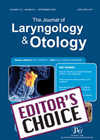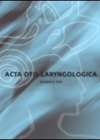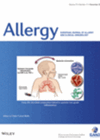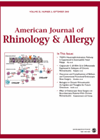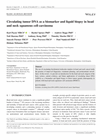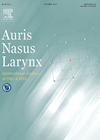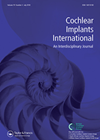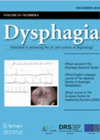
Journal Reviews archive for March 2019
How effective and safe is audiologist-led screening of acoustic neuroma in patients with asymmetrical hearing loss and unilateral tinnitus?
About two out of 100 patients presenting with asymmetric hearing and unilateral tinnitus have acoustic neuroma. The traditional method in which these patients first attend a clinician and then undergo screening through an MRI, can be expensive and prolong the...
Is there a role for facial nerve decompression in Ramsay Hunt syndrome?
This is an interesting paper. The authors recommend a transmastoid facial decompression for patients with complete facial nerve paralysis with House Brackman HB 5/6 who do not show any sign of recovery after two weeks of treatment following a diagnosis...
CRSwNP initiation, not always an interleukin fault
CRSwNP, similar to asthma, is an inflammatory disorder (type II) with eosinophilia and raised IL-5 and IL-13. Inflammation in CRSwNP is thought to be started by IL-25, IL-33 and thymic stromal lymphopoietin (TSLP), all of which form an important part...
Balloons – more complicated than first thought?
This study describes the complications seen after balloon sinuplasty (BSP) - a commonly performed procedure (particularly in the USA where it is often performed as an office procedure) versus traditional functional endoscopic sinus surgery (FESS). The data source was a...
Tonsillectomy in or out?
Although tonsillectomy is the most common surgical act performed in ENT practice, there is still some concern about the safety of outpatient or day surgery scheduling, especially in adults. Although this has been common practice in many departments for some...
Review of surgical treatments of intractable Meniere’s disease
This is a nice summary of the evidence available for the surgical treatments for intractable Meniere’s disease. To summarise, in five-10 years, over 90% of vestibular neurectomy cases, more than 80% of intratympanic gentamycin treatment, and 70-80% of endolymphatic sac...
Superstructure-preserving stapes surgery in otosclerosis
Stapedectomy is a well-established procedure for otosclerosis but it has a small risk of a non-hearing ear, which can be devastating for patients. The development of a procedure which is safer and with a less steep learning curve for junior...
Cochlear implantation in children with congenital long QT syndrome
Jervell and Lange-Neilsen syndrome is a condition where sensorineural deafness coincides with inherited abnormalities of the heart, resulting in prolonged ventricular repolarisation, frequently shown on an ECG with a prolonged QT interval. These children can present at implant centres for...
Inter-aural hearing preservation in cochlear implantation
Hearing preservation during cochlear implantation is becoming increasingly important, although results can be unpredictable. NICE are in the process of updating their guidance in the UK and it is possible that those with better hearing than the current candidates will...
Do nasogastric tubes affect aspiration risk?
A nasogastric tube (NGT) is frequently used for patients who are at risk of endotracheal aspiration of oral diet. However, this cannot eliminate the aspiration of saliva. The incidence of aspiration pneumonia in patients with NGT therefore remains high. Some...
The DOSO outcome measure
The subjective outcome measures are a crucial element of the auditory rehabilitation process for hearing aid fitting. Authors hypothesised that normative data used for the device-orientated subjective outcome (DOSO) were no longer valid for new hearing aids technologies (2015-era technologies)....
Social representation of hearing loss in different countries
The social representation of different phenomena has generated strong interest among researchers recently. The social representation of ‘hearing loss’ is different in different countries such as India, Iran, Portugal, and the UK, as was evidenced in previous research. This study...

